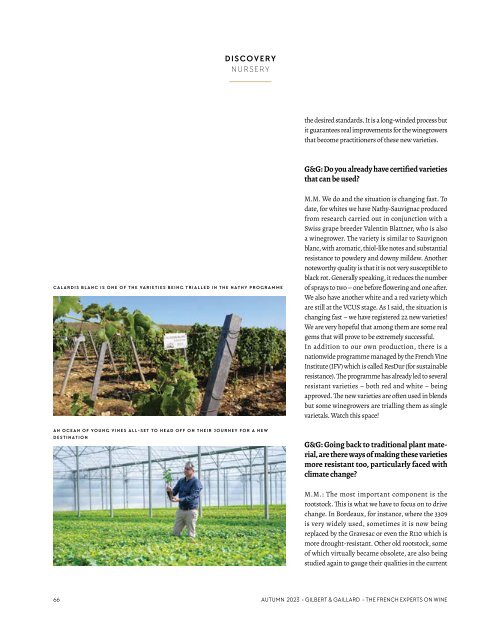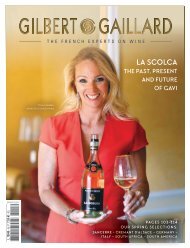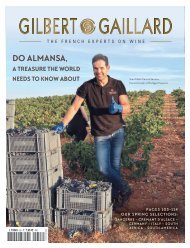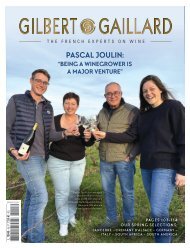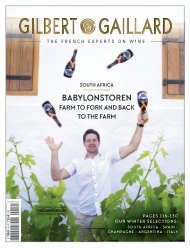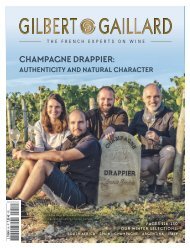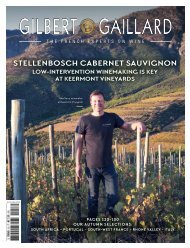Create successful ePaper yourself
Turn your PDF publications into a flip-book with our unique Google optimized e-Paper software.
DISCOVERY<br />
NURSERY<br />
the desired standards. It is a long-winded process but<br />
it guarantees real improvements for the winegrowers<br />
that become practitioners of these new varieties.<br />
G&G: Do you already have certified varieties<br />
that can be used?<br />
CALARDIS BLANC IS ONE OF THE VARIETIES BEING TRIALLED IN THE NATHY PROGRAMME<br />
M.M. We do and the situation is changing fast. To<br />
date, for whites we have Nathy-Sauvignac produced<br />
from research carried out in conjunction with a<br />
Swiss grape breeder Valentin Blattner, who is also<br />
a winegrower. The variety is similar to Sauvignon<br />
blanc, with aromatic, thiol-like notes and substantial<br />
resistance to powdery and downy mildew. Another<br />
noteworthy quality is that it is not very susceptible to<br />
black rot. Generally speaking, it reduces the number<br />
of sprays to two – one before flowering and one after.<br />
We also have another white and a red variety which<br />
are still at the VCUS stage. As I said, the situation is<br />
changing fast – we have registered 22 new varieties!<br />
We are very hopeful that among them are some real<br />
gems that will prove to be extremely successful.<br />
In addition to our own production, there is a<br />
nationwide programme managed by the French Vine<br />
Institute (IFV) which is called ResDur (for sustainable<br />
resistance). The programme has already led to several<br />
resistant varieties – both red and white – being<br />
approved. The new varieties are often used in blends<br />
but some winegrowers are trialling them as single<br />
varietals. Watch this space!<br />
AN OCEAN OF YOUNG VINES ALL-SET TO HEAD OFF ON THEIR JOURNEY FOR A NEW<br />
DESTINATION<br />
G&G: Going back to traditional plant material,<br />
are there ways of making these varieties<br />
more resistant too, particularly faced with<br />
climate change?<br />
M.M.: The most important component is the<br />
rootstock. This is what we have to focus on to drive<br />
change. In Bordeaux, for instance, where the 3309<br />
is very widely used, sometimes it is now being<br />
replaced by the Gravesac or even the R110 which is<br />
more drought-resistant. Other old rootstock, some<br />
of which virtually became obsolete, are also being<br />
studied again to gauge their qualities in the current<br />
66 AUTUMN 2023 • GILBERT & GAILLARD - THE FRENCH EXPERTS ON WINE


